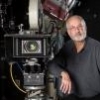Leica sensor safety on new higher power TSA CAT scan X-ray systems
-
Recently Browsing 0 members
- No registered users viewing this page.
-
Similar Content
-
- 20 replies
- 941 views
-
- 69 replies
- 12,548 views
-
- 228 replies
- 34,500 views
-




Recommended Posts
Join the conversation
You can post now and register later. If you have an account, sign in now to post with your account.
Note: Your post will require moderator approval before it will be visible.